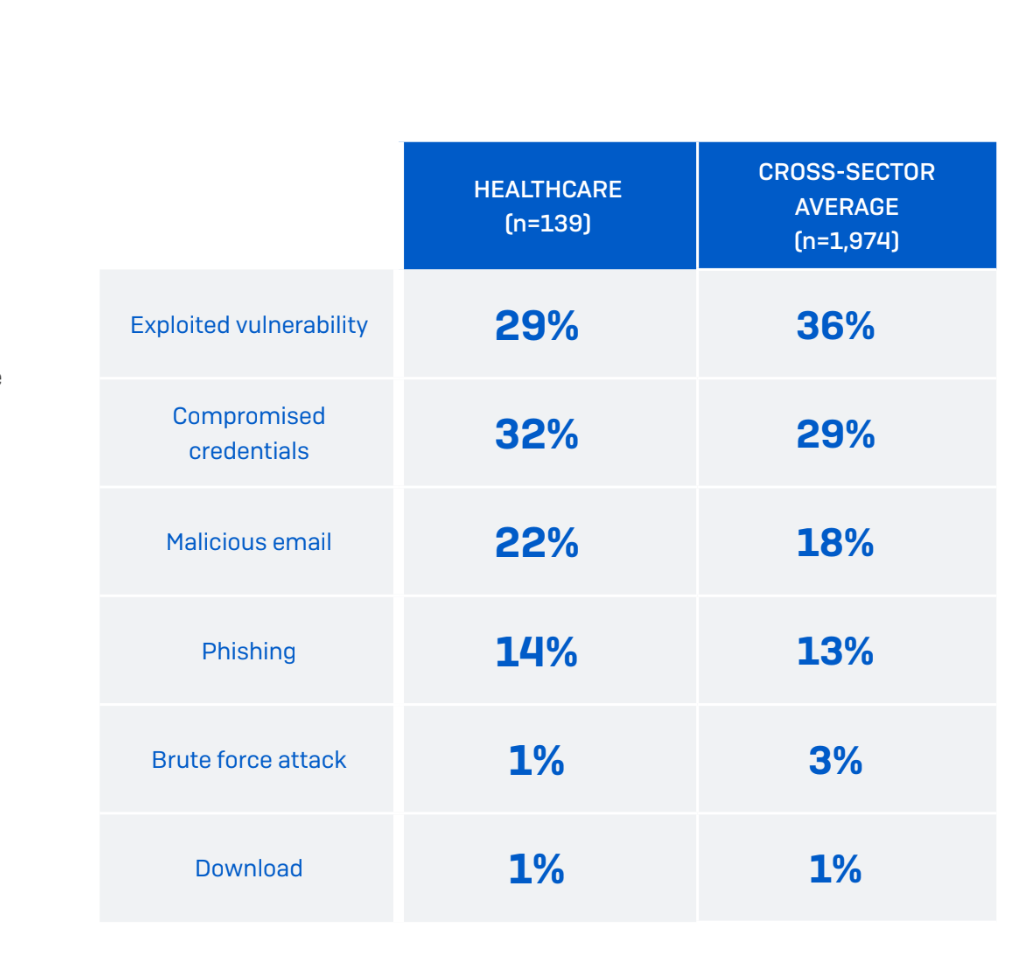What You Should Know:
- Fortified Health Security, a managed security services provider (MSSP) specializing in healthcare cybersecurity released its 2025 Horizon Report.
- The semiannual publication provides valuable insights into the latest cybersecurity trends, threats, and solutions for healthcare organizations.
2025 Horizon Report Background
The 2025 Horizon Report, a free resource for healthcare professionals since 2017, analyzes data from the Office for Civil Rights
Read More
Healthcare Ransomware
Healthcare Under Attack: Ransomware Groups Increasingly Target Hospitals and Clinics
What You Should Know:
- Black Kite, a provider of third-party cyber risk intelligence, has released new data revealing a disturbing trend: ransomware groups are disproportionately targeting healthcare organizations.
- The research, conducted by the Black Kite Research Intelligence Team (BRITE), identifies specific ransomware groups and their preferred targets within the healthcare sector, highlighting the urgent need for enhanced cybersecurity measures.
Top Ransomware Groups
Read More
Ransomware Attacks on Healthcare Services Surge in 2024
What You Should Know:
- Ransomware attacks are a growing threat across all industries, but the healthcare sector is facing a particularly alarming surge in these incidents, according to new data from SafetyDevices.
- New data reveals a concerning trend of increased attacks on healthcare providers, raising concerns about patient safety, data security, and the financial stability of healthcare organizations.
Healthcare: A Prime Target for Cybercriminals
Healthcare services are
Read More
Penalizing Hospitals Won’t Stop Ransomware: Why Collaboration, Not Fines, is Key to Healthcare Cybersecurity
The recent $50 million initiative announced by the Advanced Research Projects Agency for Health (ARPA-H) can’t hurt in the ongoing battle against ransomware in the healthcare sector.
This investment is aimed at strengthening the cybersecurity defenses of hospitals nationwide, protecting sensitive patient data, and enhancing the resilience of healthcare systems against cyber threats. However, I must emphasize that while $50 million is a step in the right direction, it is merely a drop in
Read More
Healthcare Cybersecurity: 5 Steps to Prepare for a Ransomware Attack
It's not a matter of if but when an organization will face a security incident. In 2023, the healthcare industry faced its toughest year, with over 124 million health records breached in a total of 725 hacking incidents, according to The HIPAA Journal. This trend shouldn’t come as a surprise given how hospitals and medical offices are relatively lucrative and easy targets for cyberattacks due to the combination of outsourced services and solutions, legacy systems, and varying degrees of network
Read More
UnitedHealth Faces New Ransomware Threat After Alleged $22M Payment Failure
What You Should Know:
- UnitedHealth Group is embroiled in a new ransomware saga, just as it recovers from a February attack, according to a blog post from threat intelligence firm SOCRadar.
- A hacking group called RansomHub claims to possess 4 terabytes of stolen data from UnitedHealth's subsidiary, Change Healthcare and is demanding a ransom to prevent its release.
RansomHub's Demands and Allegations
This data supposedly includes the personal details and medical records of
Read More
75% of Healthcare Organizations Hit by Ransomware Attacks, Sophos Survey Finds
What You Should Know:
- Cybercriminals have been highly successful in their ransomware attacks on healthcare organizations, according to a new survey conducted by Sophos. “The State of Ransomware in Healthcare 2023, report reveals nearly 75% of the surveyed healthcare organizations reported that their data was successfully encrypted by the attackers.
- In addition, only 24% of healthcare organizations were able to disrupt a ransomware attack before the attackers encrypted their
Read More
How Healthcare Organizations Can Defend Against Ransomware
There’s no denying it - the need for stronger cyber defense is urgent. More ransomware attacks targeted healthcare in 2022 than any other critical infrastructure sector, according to the FBI’s Internet Crime Complaint Center (IC3). With attacks on healthcare negatively impacting patient care – including increased mortality rates - healthcare organizations must adopt proactive approaches to better protect their patients and sensitive information.
In the spring, the Multi-State Information
Read More
EMPI/MPI: An End-to-End Approach to Patient Data Integrity
Maintaining patient data integrity is more complicated than ever; cybersecurity threats loom, patients are taking more ownership of their care (self-registration, for example) and health system merger activity is on the rise. It can make the quest for the ever-elusive 1% maximum duplicate rate seem, at times, unattainable.
But a secure, accurate, and duplicate-free MPI/EMPI can be achieved. It just requires a multi-pronged approach to protect data throughout its journey into a health system
Read More
What Healthcare Leaders Need to Do Now About Ransomware
If ransomware is not a topic of conversation around any healthcare organization’s boardroom table, directors and senior executives may be exposing the organization (and themselves) to considerable risk. Here’s a guide to ransomware trends for 2022 and steps healthcare leaders can take to help protect their organizations.
Ransomware trends in 2022
The risk of a ransomware attack in 2022 is substantial, with gangs specializing in targeting the healthcare sector. Last year saw dozens of
Read More










